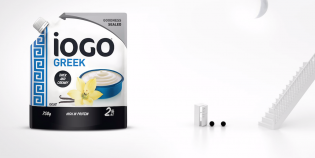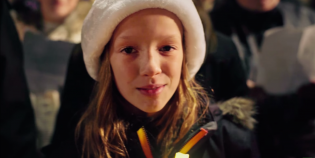“Quebec agencies have no choice but to look towards the international market,” says Patrick Beauduin, vice-president and chief convergent creative offi cer at Cossette Montreal . “Many advertisers are moving their headquarters outside the province, and Quebec companies are expanding to international markets. Big local names such as Bombardier or SNC-Lavalin are now international brands. Why should our agencies settle for the Quebec market?” It’s a sentiment heard often around Quebec’s agencies these days.
This idea is a complete departure from the traditional views held since the creation of BCP by Jacques Bouchard in 1963. Referred to as the “father of Quebec advertising,” Bouchard wrote Les 36 cordes sensibles des Quebecois, an analysis of the cultural and consumption habits of Quebecers that included observations like : ” Ads created in Quebec are more effective than the ‘other,’ translated into Toronto French.”
Ever since, many have argued for a strictly Quebecois industry, to ensure that Quebec agencies would be granted all contracts for the province by foreign and English-Canadian advertisers. But this way of functioning has run its course. On the one hand, several agencies have reached a certain maturity and need to look elsewhere for new business opportunities.
“Once you have a brewery, a bank and a car manufacturer, you have to expand outside of Quebec,” says François Lacoursière, executive vice-president and senior partner at Sid Lee. On the other hand, globalization and the relocation of Canadian headquarters to Toronto have had an impact on the Quebec industry. According to a study by the Conseil de l’industrie des communications du Québec (CICQ) published in 2007, Ontario’s share of profi ts from the communications sector increased from 55.8% in 1999 to 57.2% in 2004, whereas Quebec’s share decreased by a similar proportion, from 26.9% to 25.7%. This translates into an annual loss of $25 to $30 million for Quebec’s communications industry.
“During this period, Quebec has lost more than $100 million in advertising investments,” says Yanik Deschênes, chairman and CEO of the Association of Quebec Advertising Agencies (AAPQ). “Everything points to further losses if nothing is done .” However, the CICQ study showed that in 2007, 15% of advertising revenues in Quebec came from outside the province: 12.8% from English Canada (mainly Ontario) and 1.5% from international contracts.
This realization has been spreading through the Quebec industry since at least 2001, when Quebecois professionals met to begin what they dubbed “The Great Shift” for the industry and to address the “already visible effects of globalization .” But most recently the new attitude has been manifest in the AAPQ’s mission of raising Quebec agencies’ profi les internationally. The initiative, launched by BleuBlancRouge president Sébastien Fauré, until recently the chairman of the administration council of the AAPQ, and Sylvain Morissette, former CEO of the AAPQ, is now led by Deschênes.
The effort started by launching Montreal.ad, a virtual catalogue of advertising content by local agencies that served as a “one-stop shop” for discovering Quebec talent outside the province. Then, in August, the AAPQ launched YUL-Lab, an “advertising laboratory.” Thanks to the collaboration between agencies and the big media groups in Quebec, international advertisers can come to Montreal to test campaigns or new marketing approaches. Montreal is an ideal test market for marketers, say YUL-Lab champions, because, aside from the city’s multilingual, mutli-ethnic population, Montreal agencies have the new media expertise to help companies understand emerging platforms like Facebook and Twitter.
“The idea was planted a long time ago, but the economic crisis created the perfect context to put our project in motion,” says Deschênes. On Nov. 19 and 20, Deschênes will be in Chicago with Daniel Lamarre, CEO of Cirque du Soleil, for the AAPQ’s first international undertaking. Other delegations will be heading to New York and Cannes in the coming months to meet with marketers and convince them that Montreal is the ideal test market for all their advertising ideas. This is the perfect time to prove to advertisers that Quebec is the best place to test their international campaigns at low costs, says Deschênes.
“With new media, advertisers don’t know what works and what doesn’t. The economic crisis increased the need for a good return on investments… With YUL-Lab, we are handing them this possibility.”
As soon as the launch was announced, L’Oréal Canada agreed to be the first advertiser to test YUL-Lab. “I spoke with colleagues from New York and Paris, and they were excited. This is the only project of its kind in the world,” says Stéphane Bérubé, CEO of the L’Oréal Paris brand in Canada. For him, Quebec’s unique advantage is the media supply. “We have a very developed media market that behaves as a closed environment because of the language.
So there is no spillover from American or English Canadian advertisers, which means we can precisely measure the effects of our campaigns,” he says. Moreover, because the Quebec market is smaller, it is less expensive for L’Oréal to test a campaign than in France. Next year, L’Oréal Paris will test a new campaign from its Montreal agencies Marketel and Nurun and seek to measure the effects of adding digital to its media mix.
YUL-Lab will benefit everyone, says Bérubé. “What we are really creating are best practices that can then be used by the entire industry.”
Lilian Tomovich, vice-president and brand manager for Mastercard Canada, agrees Quebec holds unique benefits as a test market. Mastercard debuted its Canapasdeprix.ca website (“priceless” translates to “ça n’a pas de prix”) in Quebec with Marketel before launching it in various international markets.
The site asked Quebecers to share their priceless Quebec experiences.
“We began conceptualizing the campaign in the fall of 2006, when tests on social networks were not very developed,” says Tomovich. “Testing the campaign [in Quebec] made us realize we had to allow comments by other users to give credibility to the chosen places.”
Tomovich does offer a warning to advertisers though. “We were able to test our campaigns on the Montreal market because they are universal,” she says. “But if an advertiser changes its campaigns according to each market, it might be impossible to test creations in Montreal. After all, Quebec is distinct because of its language and culture.”
Cossette’s Beauduin, who lived for many years in Belgium, draws several parallels between the advertising revolution that country went through in the last decade and what is happening in Montreal now.
Quebec, like Belgium, is small, its population is divided by language, and it has a a mix of cultures. For Belgium and for Quebec, internationalization was a question of survival. “We were next to giants, like France, the United Kingdom, and Germany,” says Beauduin. “We decided we didn’t just want to be the best in Belgium; we wanted to be internationally renowned. We wanted an international advertiser to think ‘Why not give our account to an agency in Brussels or Antwerp?’ This is what we are trying to do with Montreal.ad.”
Remarkably, nine Belgian agencies took home 30 Lions at this year’s International Advertising Festival in Cannes. Canada won 13.
But if Quebec wants to succeed according to the Belgian model, a major obstacle must be overcome. “Quebec has a much stronger identity than Belgium, and that could hinder our industry’s international expansion,” says Beauduin. That point of view is shared by Jacques-Hervé Roubert. “One of the things that hit me when I arrived here is how Quebec ads are so deeply rooted in Quebec culture. You have to be from here to understand them,” explains the CEO of Nurun, a digital agency founded in Paris, whose headquarters relocated to Montreal in 2001. Because of this, Quebec ads are difficult to export. “For the moment, the only country capable of creating campaigns with a universal appeal is the United States. When they wanted to export the Marlboro Man, it was simple. They realized that American culture is practically global culture,” he says.
However, not everyone believes the shift to a more global role will happen over night. “I am extremely favourable to initiatives such as YUL-Lab and Montreal.ad, but key players need to change their attitudes,” said one industry professional who would only speak about YUL-Lab on the condition of anonymity.
“When I speak with art directors, they know plenty of people in Quebec media, but they have zero contacts in English Canada. If agencies really want to be international, they need to be more open to the rest of the world. They should fly to Toronto once in a while to see what’s being done,” he says.
And Luc Dupont, a professor at the University of Ottawa specializing in advertising, thinks it will take a long time for the industry to adapt and produce more international content. “For the past 40 years, the industry catered to the Quebec market. Now, it must prove that Quebec can create for other markets.”
But Beauduin believes the historical stance of Quebec’s advertising industry is not an obstacle to expansion to international markets. “Not only are we in the best position to cater to the Quebec market, but we can also cater to other markets,” he says. He says Montreal’s cultural diversity is a unique advantage to attract advertisers. “We speak French in an Anglo-Saxon environment and we’re an immigration country. Because of this we can develop if not a universal industry, a multicultural one.”
Roubert shares his opinion. “Montreal is one of the most multicultural cities in the world. There is no other city in the world that speaks French and English interchangeably and that can be an actual bridge between Europe and America,” he says.
Quebecers will have to learn new cultural references, but the Internet can help, adds Beauduin. “Until the arrival of Web 2.0, local or regional cultural references were extremely important,” he explains. “But with the creation of new platforms, and in particular thanks to downloading around the world, cultural references are going global. In 2015-2020, consumers will buy more according to universal references, a completely new phenomenon in the history of consumerism.”
And many in Quebec advertising believe it’s a phenomenon they understand and can respond to as well or even better than professionals from all corners of the world.










